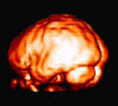

Instructor:
Bruce MacLennan
Phone: 974-5067
Office: 110-A Ayres
Hours: 1-2 TR or
make an appointment
Email:
maclennan@cs.utk.edu
Teaching Assistant:
Ray Byler
Phone: 4-8807
Office: 5 Ayres
Hours: 9-10 WR
Email:
byler@cs.utk.edu@cs.utk.edu
Classes: 3:40-4:55 TR in BU 655
Directory of Handouts, Labs, etc.
This course will be based on a new text, J. A. Anderson's An Introduction to Neural Networks (MIT Press, 1995). In addition to basic neural network theory and applications, it discusses the applications of neural networks to modeling human cognition, so the course should be useful to anyone with an interest in artificial intelligence or cognitive science.
 Return to MacLennan's home page
Return to MacLennan's home page
 Send mail to Bruce MacLennan / MacLennan@cs.utk.edu
Send mail to Bruce MacLennan / MacLennan@cs.utk.edu